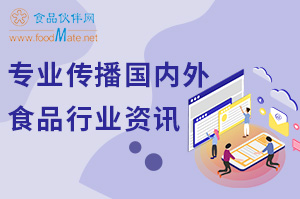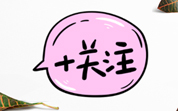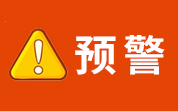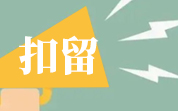食品伙伴網(wǎng)網(wǎng)友李和平、熊貝貝報道,近日,歐盟食品安全機構公布了食品及飼料中二惡英含量綜合報告。
4月5日,歐盟食品安全局(EFSA)針對食品及飼料中二惡英含量情況公布了一份報告。報告數據來(lái)自歐盟21個(gè)成員國近10年(1999至2008年間)7000多個(gè)樣品的二惡英及類(lèi)似物分析結果。由于歐盟采取相關(guān)措施發(fā)揮了作用,從二十世紀七十年代起,(歐盟)環(huán)境中的二惡英及類(lèi)似物開(kāi)始呈現下降趨勢。分析報告顯示,(歐盟)二惡英及類(lèi)似物有如下特點(diǎn):
1.在肝制品中存在情況比較嚴重
通過(guò)對動(dòng)物肝臟及肝臟制品分析發(fā)現:二惡英及二惡英類(lèi)似物(如:多氯聯(lián)苯PCBs)與脂肪含量有相關(guān)性。魚(yú)肝臟及魚(yú)肝臟制品中的二惡英及類(lèi)似物含量最高。在飼料中,也發(fā)現飼料配料魚(yú)油中的二惡英及類(lèi)似物相對含量最高。
在所檢測樣品中,有8%的樣品所含的二惡英及類(lèi)似物超過(guò)歐盟規定的最高限量。
當然造成上述結果可能存在如下因素:一些樣品針對性地采自受污染情況下;另外,對于超過(guò)最高限量的樣品來(lái)說(shuō),不同食品及飼料組分的取樣比例也存在非常大的取樣差異情況。
2.還沒(méi)有發(fā)現明顯的二惡英及類(lèi)似物變化趨勢
鑒于報告中所發(fā)現的(二惡英及類(lèi)似物變化)不確定情況,報告得出結論:食品及飼料中所含的本底二惡英及類(lèi)似物沒(méi)有隨著(zhù)時(shí)間變化而變化,即沒(méi)有明顯的變化趨勢。目前,歐盟所采用的二惡英及類(lèi)似物測定方法是世界衛生組織(WHO)1998年推薦的測量方法,該方法基于測定不同類(lèi)型二惡英的毒性數值來(lái)衡量二惡英的總含量。
3.二惡英及類(lèi)似物總量在減少
2005年,世界衛生組織(WHO)也建議歐盟食品安全局(EFSA)使用新的二惡英檢測方法來(lái)評價(jià)二惡英(對環(huán)境)的整體影響。新方法降低了某些二惡英類(lèi)似物的相對毒性。盡管分析報告中數據顯示“不同食品及飼料中的二惡英變化沒(méi)有明顯變化趨勢”,但如果采用新的二惡英測算方法進(jìn)行統計的話(huà),(歐盟)食品及飼料中的二惡英整體含量將會(huì )下降14%。另外,分析報告還建議,為確保對食品及飼料中二惡英及類(lèi)似物含量情況進(jìn)行準確評價(jià),需要對每類(lèi)食品及飼料進(jìn)行大量的、連續的隨機檢測。
背景資料:二惡英及類(lèi)似物,如多氯聯(lián)苯(PCBs),主要是焚燒垃圾及樹(shù)木過(guò)程產(chǎn)生的有毒物質(zhì);工業(yè)生產(chǎn)過(guò)程中也產(chǎn)生一些二惡英及類(lèi)似物。很多食品中都發(fā)現有低含量的二惡英類(lèi)物質(zhì)存在。二惡英類(lèi)物質(zhì)存在不會(huì )立即產(chǎn)生健康問(wèn)題,只有累積達到一定高的含量后才會(huì )引起系列健康問(wèn)題,如:導致癌癥。由于二惡英不易被破壞和在食物鏈中能夠累積、且易溶于動(dòng)物脂肪中,所以,二惡英問(wèn)題一直是食品安全關(guān)注的重要問(wèn)題。
英文報道原文:
EFSA gives European overview of dioxin levels 05 Apr 2010
http://www.allaboutfeed.net/news/efsa-gives-european-overview-of-dioxin-levels-4298.html
The European Food Safety Authority (EFSA) has published an analysis of the levels of dioxins and related substances in food and animal feed.
The report, which was prepared by EFSA’s Data Collection and Exposure unit, is based on over 7,000 samples collected by 21 European countries between 1999 and 2008.
Dioxins and similar compounds, such as dioxin-like polychlorinated biphenyls (PCBs), include a range of toxic substances which are formed by burning – e.g. through waste incineration or forest fires – and some industrial processes.
Their presence in the environment has declined since the 1970s, following concerted efforts at the EU level.
Liver products
The highest average levels of dioxins and dioxin-like PCBs in relation to fat content were observed for liver and liver products from animals.
The highest average levels in relation to total product weight were for fish liver and products derived from fish liver. In animal feed, the highest average levels were found in fish oil.
Overall, 8% of the samples exceeded the different maximum levels set out in EU legislation.
However, some of these samples clearly originated from targeted sampling during specific contamination episodes. There were also large variations between different groups of food and feed in terms of the proportion of samples which exceed maximum levels.
No clear trend
The report concludes that no clear trend can be established regarding changes in background levels of dioxins and related substances in food and feed over time, as there were increases in some categories but decreases in others.
Furthermore, occasional contamination episodes and a lack of information on which samples resulted from targeted or random sampling make it difficult to assess such trends.
The current EU method for measuring overall dioxin levels is based on toxicity values for different types of dioxins recommended by the World Health Organisation (WHO) in 1998.
Overall reduction
EFSA was also asked to assess the impact on total dioxin levels of using toxicity values set out in WHO recommendations from 2005, which downgraded the relative toxicity of certain types of dioxins.
The report finds that using the new values would reduce overall dioxin levels by 14%, although the extent of this reduction was very different across food and feed categories.
Finally, the report recommends continuous random testing of a sufficient number of samples in each food and feed group to ensure accurate assessments of the presence of dioxins and dioxin-like PCBs.
Dioxins are found at low levels in many foods. They do not cause immediate health problems, but long-term exposure to high levels of dioxins has been shown to cause a range of effects, including cancer. Their persistence and the fact that they accumulate in the food chain, notably in animal fat, therefore continues to cause some safety concerns.
相關(guān)政策解讀











 地區:
地區:







 魯公網(wǎng)安備 37060202000128號
魯公網(wǎng)安備 37060202000128號



